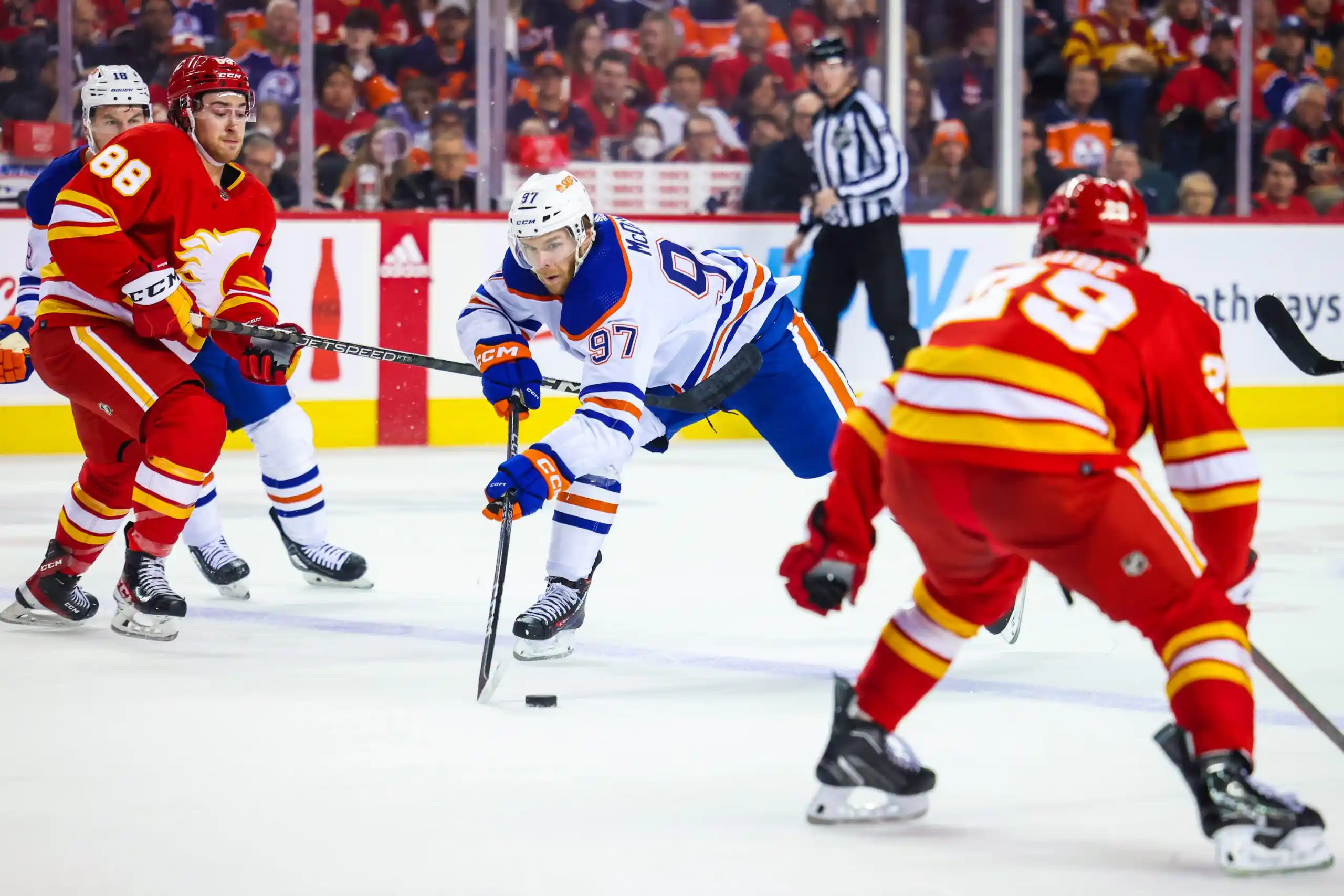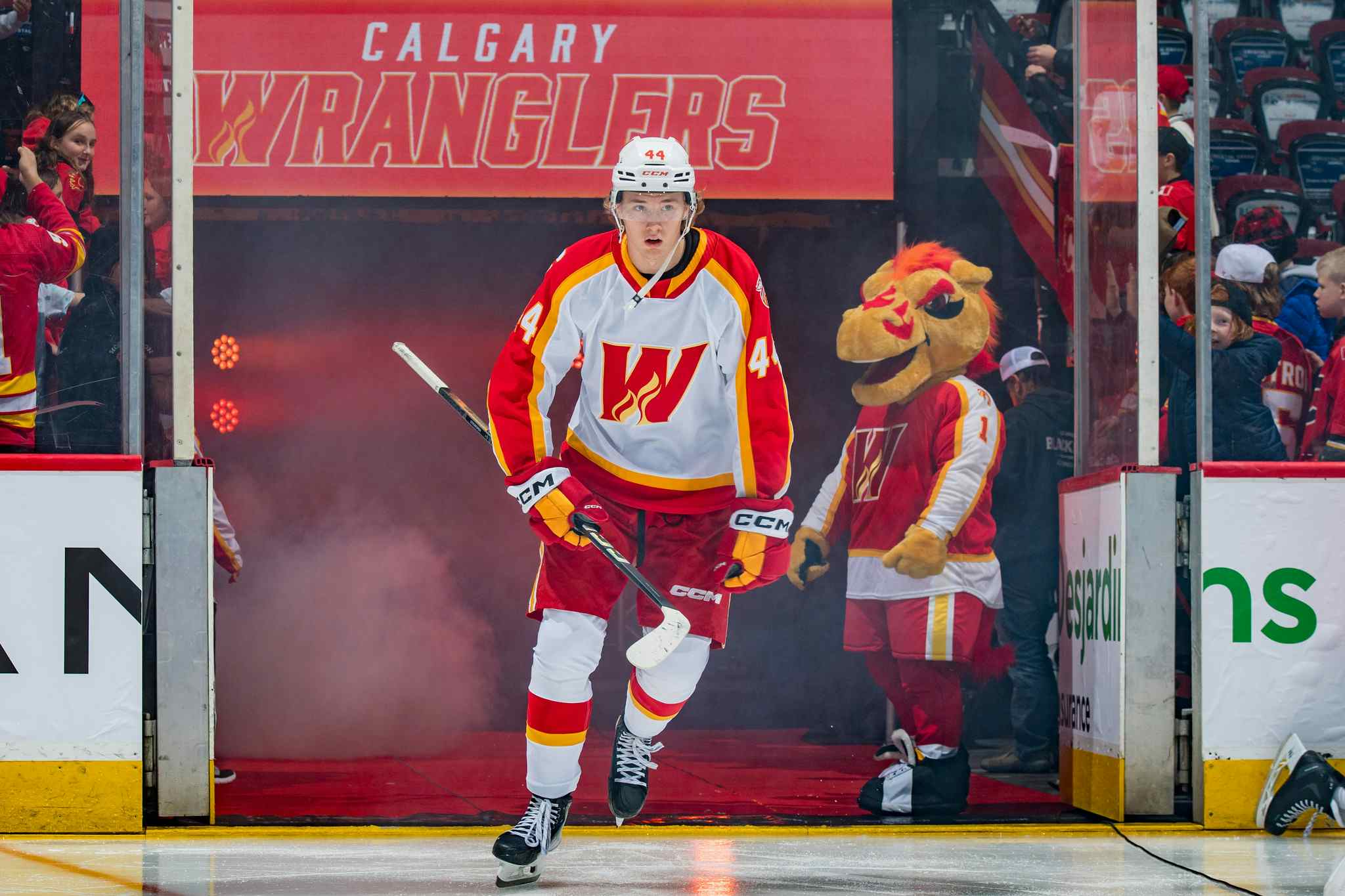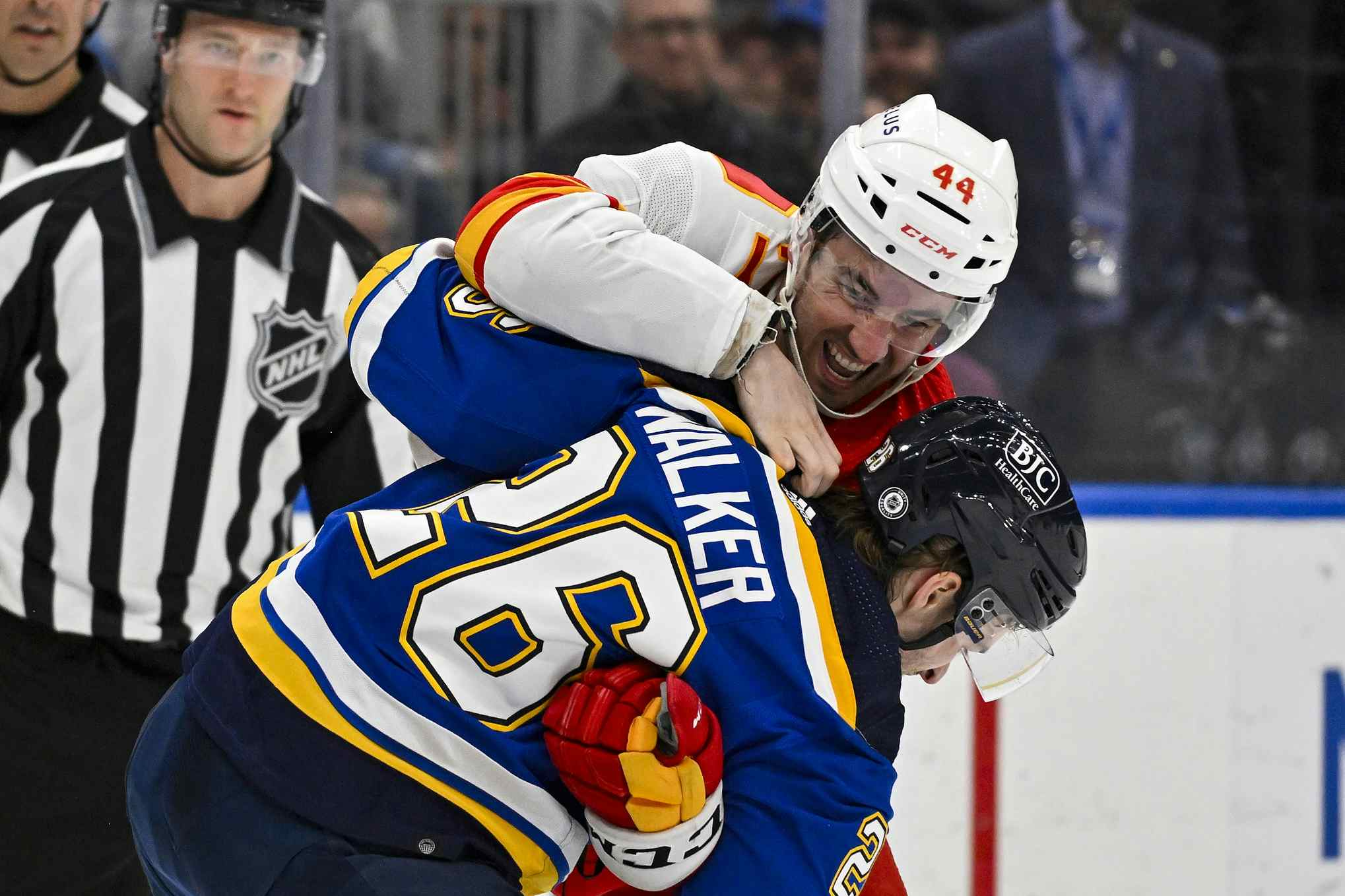Thanks, tips: how the Flames keep getting burned on the PK
By Ryan Pike
7 years agoAfter Calgary’s 5-1 loss to the Chicago Blackhawks on Nov. 1, Flames head coach Glen Gulutzan was not happy. “The most frustrating thing for me is we made the exact same mistake on
the penalty kill that we did the night before, which we addressed this
morning. That’s the most frustrating.”
the penalty kill that we did the night before, which we addressed this
morning. That’s the most frustrating.”
The mistake? Yet another tip-in goal by an opposing power play. It’s become a continual vulnerability for the Flames this season, so we thought we’d illustrate for our readers precisely what the coach was talking about (and perhaps ponder what can be done about it).
THE GENERAL FORMATION
Last month, our pal Mike Fail did a great job illustrating the general concept of Paul Jerrard’s revamped penalty kill. In short? Intelligent, targeted aggression, in a system known as the Czech Press.

Here’s a brief illustration of what the Flames’ penalty kill has looked like over the last while.

In short, it’s a box formation. (Which isn’t all that aggressive.) Teams like the box because it allows the PK to keep the puck around the perimeter and (theoretically) more readily allows for disruption of passes and shots by closing off shooting and passing lanes. But a box formation is also much more passive than the Flames likely desire themselves to be on the PK.
There’s also been a constant vulnerability of the formation: tip-ins from the slot or right around the goal-mouth.
OCTOBER 22: ST. LOUIS
On the first goal, one of the Blues defenders sneaks in from the point and delivers a low, tippable slap shot towards the slot. David Perron is there, unchecked, for the easy direction.

On a subsequent power play, the Flames seem to be aware of their vulnerability (as you can see in the first of the two photos that follow).


The Flames cheat a bit towards the forward in the slot, not wanting to get burned in the same way. The two Blues forwards see that and criss-cross before the one-timer, which crosses up the Flames defenders. Three Flames get bunched together by the hash marks, allowing Paul Stastny a completely open lane for the tip-in.
OCTOBER 30: WASHINGTON

Against Washington, the Flames seemed to guard against the tip-in from the slot by having a strong presence. As you can see in the above image, Dennis Wideman is right on top of him.

But if you look here, you can see a challenge: Mark Giordano and T.J. Brodie move up to the hash marks to guard against Justin Williams’ tip and neglect to notice Marcus Johansson behind them. Alex Ovechkin delivers a nice slap-pass that Johansson tips past Brian Elliott.
NOVEMBER 1: CHICAGO

Once again, the opposition power play induces the Flames to operate in a box with some movement along the perimeter. Then, a rapid-fire sequence leads to a redirection goal.
WHAT CAN BE DONE?
The challenge for the Flames is that teams with good puck-moving power plays can move the puck around the perimeter rather quickly to work against the pressure the Flames are trying to create, as passing is always faster than the pursuing skaters. To combat this, the Flames have shown a tendency to move from their Czech Press formation to the box when they get flummoxed by passes around the outside. It saves energy and allows for killers to guard the passing lanes around the perimeter, but it does have the big vulnerability that we’ve described and illustrated here.
Recent articles from Ryan Pike





